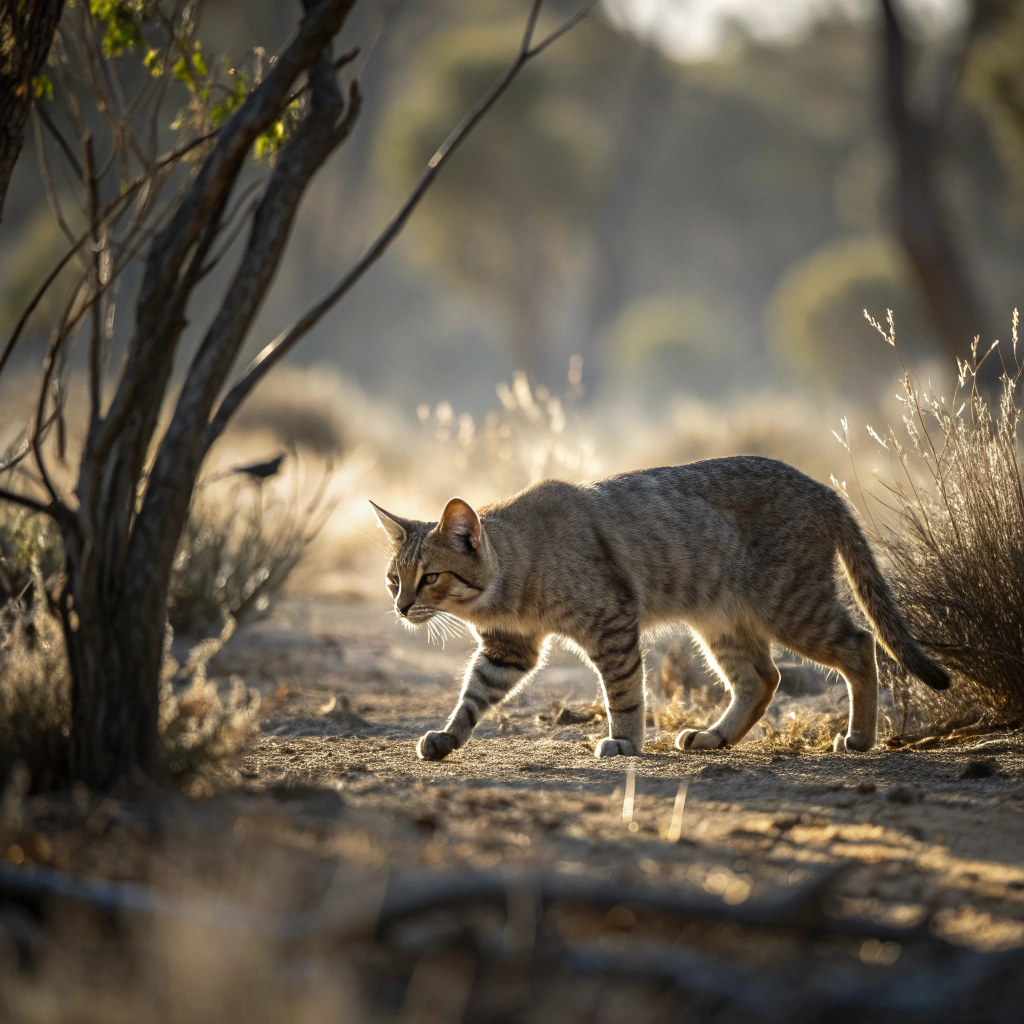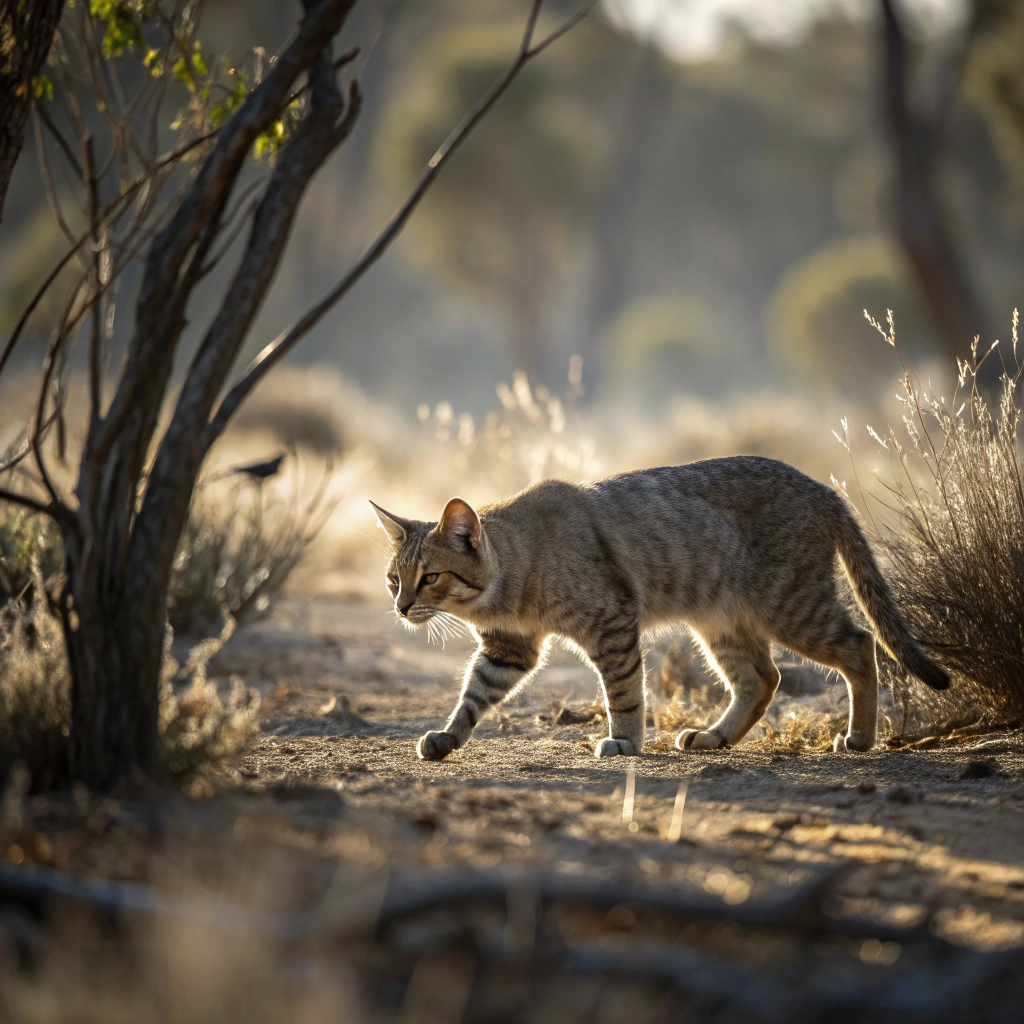Tanya Plibersek addresses Australia’s feral cat crisis! Discover policies, conservation strategies & how feral cats threaten biodiversity
Feral cats have prowled through Australia’s landscapes for over two centuries, leaving behind a legacy of ecological devastation. Their presence is not new, yet their impact has become so acute that they are now considered among the most destructive invasive species in the nation’s history. Tanya Plibersek, as Australia’s Environment Minister, has brought this conversation back to the forefront. Her words are not merely rhetoric they are a call to action at a time when native wildlife faces a silent but relentless predator.
The Scale of Australia’s Feral Cat Problem
From outback deserts to city fringes: where feral cats thrive
Feral cats are no longer confined to remote pockets of the country. They have entrenched themselves everywhere from the vast red deserts of the interior to the quiet suburban edges where bushland meets backyard. Their ability to adapt ensures their survival, whether they are hunting in arid scrub or slipping unnoticed through urban shadows.
The staggering toll on native wildlife and ecosystems
Each year, these predators kill an estimated two billion native animals birds, reptiles, mammals, and insects. Many species teeter on the edge of extinction, unable to withstand such relentless predation. The balance of ecosystems is disturbed, with cascading effects that reach far beyond the immediate loss of wildlife.
Why feral cats are considered a national environmental crisis
The scope of destruction is so immense that scientists and policymakers alike describe the situation as a biodiversity emergency. Unlike bushfires or floods, this crisis unfolds quietly and continuously. Feral cats are the invisible catastrophe, and their control has become a national imperative.
Tanya Plibersek’s Role as Environment Minister
Her environmental agenda and priorities
Plibersek’s agenda is deeply rooted in protecting Australia’s extraordinary yet fragile natural heritage. She has placed biodiversity conservation at the centre of her ministry, recognising that the survival of native species underpins the health of the land itself.
How feral cats fit into broader conservation strategies
Addressing the feral cat crisis is not an isolated task it interlocks with strategies on land management, endangered species protection, and climate resilience. Controlling these predators is a crucial lever in halting the alarming decline of native fauna.
Linking cat control to biodiversity protection
By drawing a direct line between feral cat management and the survival of threatened species, Plibersek underscores the urgency. Every animal saved from predation strengthens the resilience of ecosystems, helping to preserve the biodiversity that defines Australia’s global identity.
Recent Statements and Policy Moves
Key announcements and government initiatives
Plibersek has unveiled bold policies aimed at strengthening eradication programs and funding innovative control measures. These include expanding sanctuary zones, supporting Indigenous ranger programs, and investing in new technologies to reduce cat populations.
Community reactions and political debate
Her announcements have stirred passionate debate. Conservationists largely welcome her decisive tone, while animal welfare groups urge caution, fearing unnecessary cruelty. The public remains divided, torn between love for cats and loyalty to native wildlife.
How these policies compare to past approaches
Unlike previous piecemeal efforts, Plibersek’s strategy appears more cohesive. Earlier attempts often faltered due to underfunding and lack of coordination. Her policies seek to unify state, federal, and community actions under a shared vision.
Why Feral Cats Are Such a Challenge to Manage
Reproductive power: how quickly populations explode
A single pair of breeding cats can spawn thousands of descendants in just a few years. This exponential growth makes eradication efforts resemble a race against time, with numbers often bouncing back even after major control programs.

Adaptability and survival instincts
Feral cats are cunning, elusive, and nocturnal hunters. They thrive in environments where other predators would falter, using stealth and extraordinary agility to evade capture and sustain themselves on virtually any available prey.
The ethical and cultural debates surrounding control
Efforts to eradicate feral cats often clash with cultural attachments to domestic pets. The idea of culling provokes visceral reactions, forcing policymakers to navigate a fraught ethical landscape where compassion for individual animals collides with ecological necessity.
Methods of Control and Their Controversies
Traditional culling methods and public backlash
Poisoning, shooting, and baiting have long been standard tools, yet these provoke strong public opposition. Critics argue they cause suffering, while supporters insist they remain the most effective methods available.
Trapping, neutering, and release programs
Trap-neuter-release schemes offer a more humane alternative, but their effectiveness on a large scale is questionable. Critics say such programs merely stabilise populations rather than reduce them, prolonging the ecological damage.
New technologies and research in cat management
Emerging technologies, from gene drives to advanced tracking systems, promise a more precise future for cat control. These innovations could reduce suffering and improve efficiency, though they remain controversial and in early stages of deployment.
Balancing Animal Welfare With Environmental Urgency
The divide between conservationists and animal advocates
Conservationists see cats as an existential threat to biodiversity, while animal advocates often focus on the rights and welfare of individual animals. This divide has created one of the most polarised debates in Australia’s environmental history.
What Australians think about feral cat eradication
Surveys suggest a growing awareness of the ecological damage, yet sympathy for cats complicates the issue. Many Australians accept the need for control but feel conflicted about the methods used.
Seeking middle ground in a heated debate
Bridging this divide requires dialogue, transparency, and solutions that minimise suffering while maximising ecological outcomes. It is not an easy balance to strike, but it is essential for long-term success.
The Global Context of Feral Cats
How other countries tackle invasive cat populations
Nations like New Zealand and the United States face similar battles. New Zealand has pioneered eradication on islands, while the U.S. relies heavily on community-based sterilisation programs.
Lessons Australia can learn from international case studies
Australia can draw insights from these approaches, particularly in integrating local communities and leveraging technology. However, the sheer scale of Australia’s feral cat problem sets it apart.
Why Australia’s biodiversity makes the issue unique
Nowhere else in the world is biodiversity so heavily weighted toward small, ground-dwelling mammals—species especially vulnerable to predation. Australia’s uniqueness magnifies the feral cat crisis into a global conservation concern.
Tanya Plibersek’s Vision for the Future
Setting ambitious conservation targets
Plibersek has committed to halting species extinctions within the decade—a goal both ambitious and urgent. This vision sets a benchmark against which future governments will be judged.
Partnerships with Indigenous rangers, scientists, and communities
She emphasises collaboration, recognising the invaluable role of Indigenous knowledge and scientific expertise in shaping effective solutions. Community partnerships form the backbone of her strategy.
How success will be measured in coming years
Success will not be measured merely by reduced cat numbers, but by recovering populations of threatened species, healthier ecosystems, and the preservation of cultural heritage tied to Australia’s landscapes.
What Everyday Australians Can Do
Responsible pet ownership and desexing
Domestic cats are a key part of the puzzle. Ensuring pets are desexed, kept indoors, and prevented from roaming reduces the spillover into feral populations.
Supporting local wildlife initiatives
Volunteering, donating, or participating in conservation programs empowers individuals to make tangible contributions to protecting biodiversity.
Reducing conflict between pet cats and native species
Simple steps like building outdoor enclosures catios and ensuring cats are kept inside at night can significantly reduce predation on local wildlife.

The Stakes of Getting It Right
The future of Australia’s most vulnerable wildlife
Without decisive action, many of Australia’s unique species face extinction. The stakes could not be higher, with ecosystems hanging in the balance.
Why feral cat management remains one of the nation’s toughest environmental battles
It is a battle fought on ecological, ethical, and cultural fronts. Success requires unity of purpose, innovation, and resilience.
The legacy Tanya Plibersek hopes to leave on this issue
Plibersek’s determination positions her as a pivotal figure in Australia’s conservation story. Her legacy may be defined not only by her policies, but by whether future generations inherit a land where native wildlife still thrives alongside responsible cat stewardship.
